These 4 iconic classics just aren’t attracting young buyers
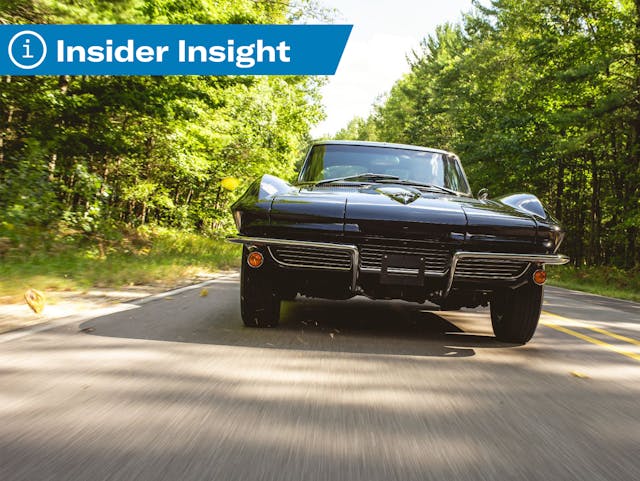
Want a better understanding of what’s driving collector-car values? Sign up for the Hagerty Insider newsletter.
If you’re a regular reader, you’ve probably noted that we frequently reference demographic data—in particular, age. That’s due to both supply and demand. We have a surfeit of information on enthusiasts’ ages courtesy of Hagerty’s insurance call centers (“how old are you” is one of the standard questions an agent will ask in order to give you a quote on insurance). And we know, from comments on Hagerty media articles and chatter at practically every car event, that many enthusiasts worry whether the next generations will keep our hobby going.
Generally, the story is an encouraging one. Our data show younger enthusiasts are increasingly interested in collector vehicles and in particular tend to appreciate the very same vehicles their parents and grandparents loved.
Of course, this interest is fortunate for the hobby—if every enthusiast sought out solely the new cars of their youth, tens of thousands of Ford Model Ts and Model As (along with countless other models) wouldn’t still be on the road.
This phenomenon doesn’t extend to every classic car, however. Based on our policy quote data, some vehicles face flagging interest among younger collectors—and we’re not just talking about fringe models, either.
Before diving in, we should remind you that age is just one of several factors that enable us to accurately track collector marque and model trajectories. Breaking down enthusiasts by generation admittedly lumps together a broad swath of automotive interests—a Gen-Xer born in California in 1965 may well have different collector influences and priorities than one born in Idaho in 1979, for example. That said, parsing interest in vehicles by collector age group has proven to be an effective indicator of the potential future health of that vehicle’s valuation.
1961–74 Jaguar E-Type (series I, II and III)
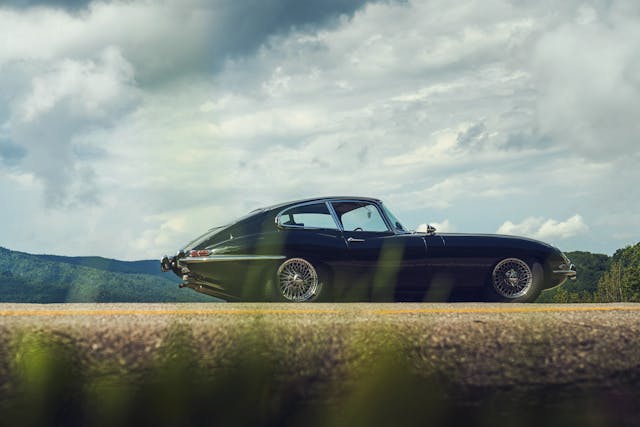
For all three series of E-Types, a full 80 percent of quotes are from enthusiasts born before 1965.
Cost likely has something to do with that—older enthusiasts still tend to dominate interest in more expensive vehicles, and the series I (1961–7) E-Type, the most popular model, is reliably a six-figure car, per both the Hagerty Price Guide and the values callers assign to their cars when they call us ($148K, on average). Yet the series II (1968–71) and the V-12-powered series III (1971–4) tend to be more attainable and still get relatively little interest from younger collectors.
1948–65 Porsche 356
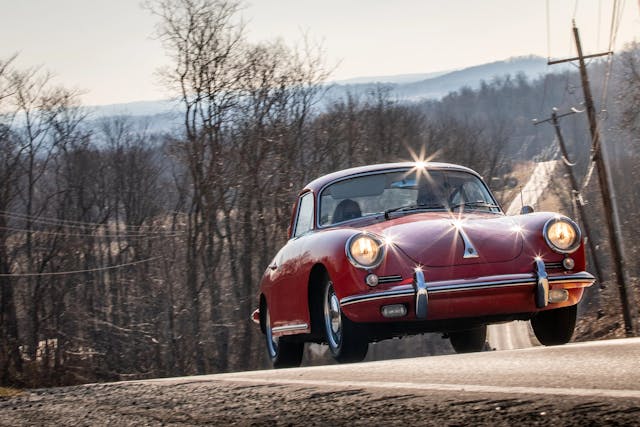
Porsche as a whole is one of the healthiest brands in terms of its appeal to enthusiasts of all ages, thanks largely to the longevity and timeless appeal of the 911. Yet that doesn’t seem to extend to the car that started it all, the 356.
Nearly 70 percent of the people calling us about insurance on one are born in 1965 or earlier. As with the E-Type, cost might be a factor. The earliest 356s (those built between 1949 and 1955, or “pre-A” in Porsche-speak) can hit seven figures, and even the later models (1963–5 356C) tend to be worth more than $100K. Yet no one would call the 964-era 911 Turbo an affordable car these days, and Gen-X and younger generations reliably make up close to fifty percent of interest in them.
1946–55 MG T-series
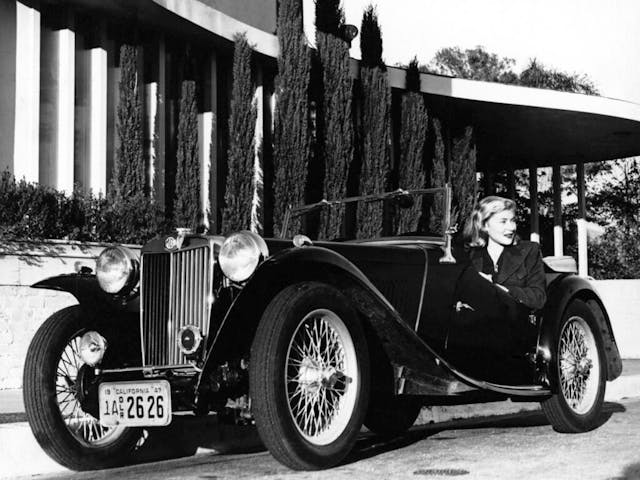
The MG aids in demonstrating that interest (or lack thereof) in a car is not simply a function of price. The MG series helped popularize the sports car in the United States after World War II and has always been an affordable gateway to the joys of open-air backroads driving. The 1950–3 TD, the most popular of the T-series MGs, can be had in good condition for around $20K. And yet 88 percent of quotes for these MGs are from enthusiasts born before 1965.
There are a number of factors here, including the fact that MG hasn’t sold a car in the United States since 1980. Yet the most salient reason for the MG’s lack of popularity among younger enthusiasts is probably the Mazda Miata, which is even less expensive (for now), considerably newer, and has the 1990s vibes that Millennials in particular seem to dig.
1963–7 Chevrolet Corvette

You might expect Corvettes to dominate this list but, for the most part, you’d be wrong. Late third-generation (or C3, 1974–1982) and fourth-gen cars (C4, 1984–1996) tend to be quite popular among younger collectors.
Yet for the 1963–7 C2, interest is indeed graying: Some 74 percent of people calling us about them were alive when the car came out. These cars aren’t MG-cheap, but, leaving aside early split-window cars and ultra-rare variants, neither are they E-Type expensive. People calling us for a quote on a C2 state an average value of $83K, about sixty grand less than for early E-Types.
The outlook isn’t the same for all American cars of this era. The 1961–9 Lincoln Continental (29 percent of quotes come from those born prior to 1965), 1960s Chevrolet Impalas (36 percent), the 1965–8 Ford Mustang (41 percent), and 1949–67 Volkswagen Beetle (36 percent) all have a majority of quotes from Gen-X and younger enthusiasts.
What’s to come?
What are the potential implications for those vehicles that don’t have much youth appeal? In the short term, we don’t see much risk. People from the baby boomer or earlier generations still control nearly 65 percent of the wealth in the United States and are extremely active in the collector car market.
If these trends continue over the long term, however, affected vehicles may see diminishing demand and values that don’t keep up with inflation or decline.
That won’t shake any of those cars from the firmaments of classic-car legend, and it won’t make them any less fun on your favorite road. Just the same, it never hurts to head out to local events, let the kiddos sit in the car, and take them for a spin.
***
Check out the Hagerty Media homepage so you don’t miss a single story, or better yet, bookmark it. To get our best stories delivered right to your inbox, subscribe to our newsletters.
Via Hagerty Insider
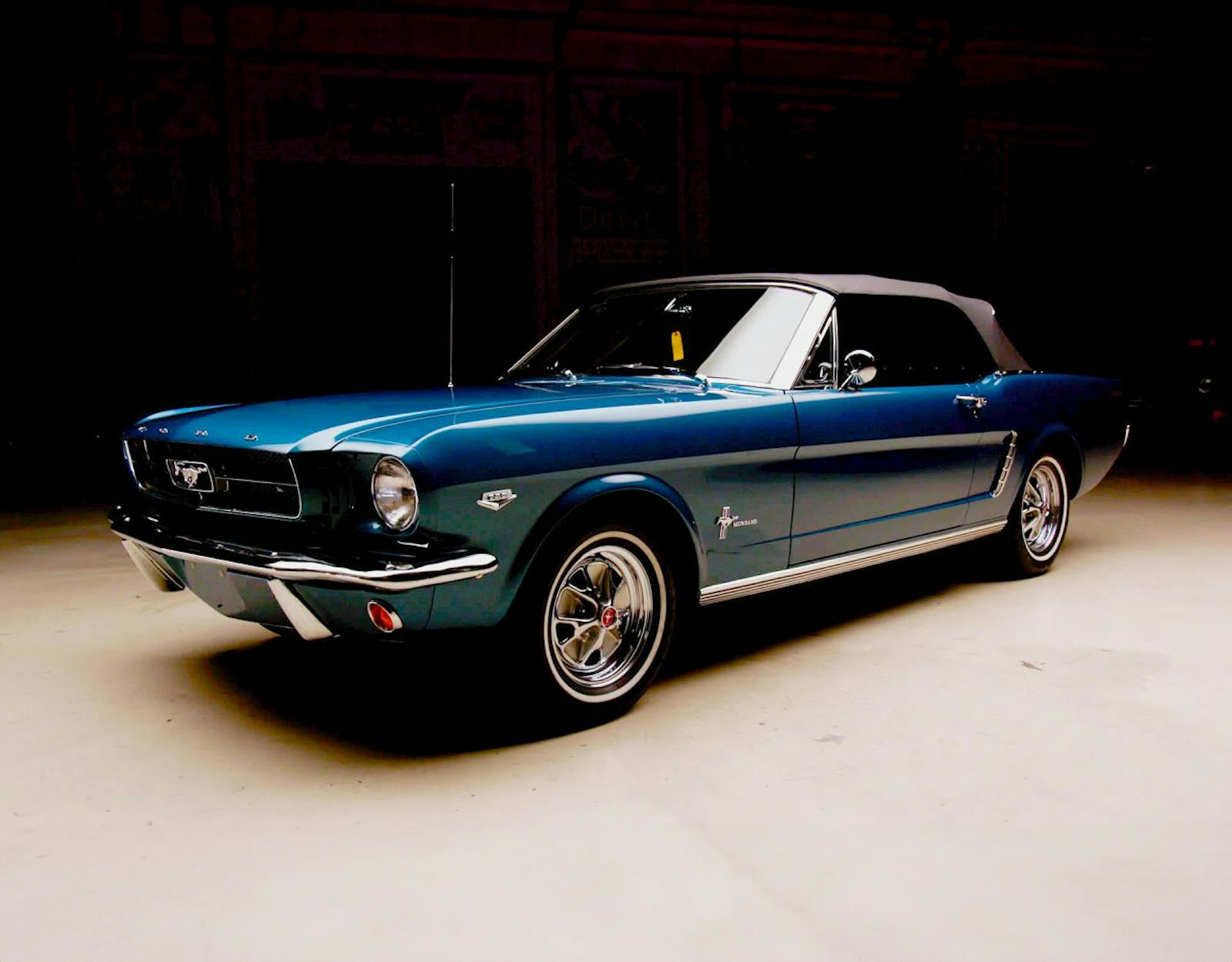

All these comments perfectly explain the driving factors of classic car choice; heavily weighted with one’s era they grew up in and discretionary income. The graph I would like to see would show owner’s age, vehicle year/model and discretionary income… perhaps some trends might appear with these factors. There are many timeless classic cars, however, variety is the spice of life… just look at the range of car designs from any era.
Anyone who’s into cars, even a touch, that can’t connect to a pre WWII Ford, is deprived of an American Historical Perspective. The old Fords have been taken for granted for so long that they were seemingly an endless supply. This is not the case today. They represent the democratization of the automobile and were an American innovation reaching masses beyond our borders. Sure the Japanese makers have continued the tradition but thats what the Japanese do best copy successful things. Old Fords are American as apple pie and are NOT A TREND. They are an American original idea from what most autos for the masses derived from.
Why did Hagerty take away the ability to like others’ posts?! I’m not a fan of prewar Fords, but Regg makes excellent points.
(There is a 1928 Studebaker in a gas station near me, that’s been there for over a year, and I think it’s gorgeous.)
The fact that Hagerty, BaT, Mecum, BJ et al have succeeded in turning collector cars into an “asset class” brings to mind the words of a certain non-President; “what, at this point, does it matter?”. Cheers.
I am older but not as old as some and I do see trends toward resto-mods and the like with the younger generation. I have a wide breadth when it comes to “classic” cars from late 70’s and early 80’s to the 60’s with cars in between (including a 1979 Chevy Monza). With my children they have all been in the garage with me doing things with the cars, from time to time as they’ve grown, but really none of them have any interest in them. It’s interesting to me that there really isn’t much interest in any vehicles they’ve owned, and they just drive them till they drop, which has happened on several occasions.
In most cases the younger generation seems to enjoy more of the creature comforts (Power Windows, Locks, A/C, and a Nice Stereo which has to have a way to connect to their devices). I enjoy a basic car without a lot of frills and extras (including roll up windows, AM/FM radio, and a manual transmission). I think it makes it more fun and a lot less cluttered to minimize the number of distractions and just enjoy the ride.
A 2 seater kills it for many including myself. I’m thinking my next play vehicle might be a manual transmission 2000-something, under $9,000 Jeep Wrangler. If you have kids a 2 seater offer limited usage.
To each his (or her) own, but the only one mentioned here that would be on my wish list would be the C2, and I’m already happy with my C5. If I go for another Vette it’ll be a C7 because what that will cost is at the outer limit of my budget. Meaning my first choice would be the C8.
As to what’s presented here, at least some of these younger people are going for the later cars because they cost a fraction of what the C2s cost. And none of the “kids” I see who are buying what they consider hot cars have anything with an American nameplate. They’re not into what I’m into. I’ve got zero interest in what they’re driving.
I am in total agreement with these comments. The C2 would be the holy grail of cars for me but I could never afford one. I am totally happy with my C5. I get the pop-up headlights, analog dash, ignition key in the dash and not on the steering wheel. Silly things that I enjoy and I have my sons taking an interest in these types of vehicles. Maybe there’s a generation coming up that really will take an interest in the hobby.
Manual transmissions
I am in my 60s. I have 2 cars: ’42 Plymouth and ’60 Galaxie. People have come up to me at car shows, and have asked how I could ever afford them. They have heard the “classic cars” are worth $millions. It is true that certain “desirable” old cars are worth a lot. If you want to collect a car, you don’t have to buy the car that everyone else thinks is cool. The combined value of both of my cars less than the $100K mentioned in the article. There are old cars out there that cost $10K – $20K that are not basket cases, and don’t need to be restomodded to be fun to drive.
Of course there is the problem mentioned, that young people would have problems with learning to drive a manual transmission. They would have to learn how to use a choke, and how to handle cold starting, hot starting, flooding, etc. No backup camera, no touchscreen, no navigation. Some, like the Model T or A are even more challenging: unusual transmission, no synchromesh, mechanical brakes.
For me, the biggest danger for the automotive hobby is creating segregation between gen-x car enthusiasts and boomer enthusiasts. I have an awful memory at a local car show led by boomers couple years ago. They were discussing which cars are “eligible” to come to their Saturday night show. Some didn’t want cars older than 2000 model year, while others didn’t want any imports. Others didn’t want fixer uppers. Then they wonder why they can’t increase attendance and why the hobby is depleting. We need to encourage cross-collaboration between the generations and have events that promote all cars. Seeing a ’46 MG T-Series to parked between a ’68 Camaro and MK4 Supra is a fantastic opportunity to share experiences, the history and the enthusiasm to keep this hobby going for many generations to come. Full disclosure, I’m turning 50 this year and I appreciate all these cars.
I have a view that I haven’t seen of any commenter so far. I see the issue with the younger generations not into collector cars first hand. I am 37 (born in 1986) and you guys should see some of the looks I get when I pull into a car show driving one of my 71 cutlass convertibles! It’s almost as if the older people there don’t believe I belong in something so nice. The judgement, the assumptions, the disdain is vividly drawn across the faces of the 60+ crowd. You guys are not pleasant to people you don’t think fit a profile for YOUR hobby. If I didn’t have such a love for my cars for the reasons that I do, I wouldn’t feel welcome to own one. No one wants to feel like they don’t “fit”.
Boomer here. Born in early Eisenhower. It’s hard to account for this sort of thing.
I myself never liked the 356. For decades. Until I acquired a friend who had one. I’m a pretty good photographer, and after photographing that car, I came to appreciate it in a big way. Enough that if I had the kind of dough to own a few collector cars, and a garage to keep them in, this is one I’d have.
Those years of Corvette are attractive. I have a Corgi toy ’63, acquired around that time. I did photograph a mint condition ’64 convertible in the last couple of years, and enjoyed doing so. It is a beautiful car. But not one that I’m inclined to fall in love with, unlike the 356. I’m amazed at how I thought it was ugly for so long, and then fell for it.
I’ve never liked the E-type, and I’ve never liked MGs much. Taughm Magliozzi (His preferred spelling, and for anyone who doesn’t know, he was Click of Car Talk) had one, and I helped him start it once.
I think kids are more influenced by what’s around when they are growing up than by what their parents had, but my certainty about that is not all that high.
What young person has $75-125k to drop on a car that’s going to sit 99% of the time ?
Plus hagerty and every other ins co won’t insure young drivers
I have several vintage cars , and no classic car ins co would allow under 21 drivers to drive it .
And they require the car be kept in a locked garage .
So we have them insured with a regular company .
This article is silly!
Most folks cannot afford the aforementioned cars that are younger.
C2 Corvette basket cases are Uber expensive.
What’s the incentive to purchase an expensive low performance vehicle for the youth end of the purchasing market?
I didn’t buy my 67 427 tripower convertible to make money, I bought it because I wanted one since I was 14 !
Have you looked under any of those cars? Younger buyers want a car they can enjoy not a trailer queen. By todays standards those cars are beyond dangerous, drum brakes, leaf springs and shocks out back, spring and shock up front, unreliable electrical systems, the list of safety features they don’t have is longer than the list of ones they do have, like less safe than a NASCAR from 10 years ago unsafe. Don’t get me wrong, the only car on that list I don’t like is the C2, I have never liked the look of the C2, I like C1’s and C3’s but they are also dangerous and I am a suicidal veteran so I would drive them. I would also put an electronic ignition and a few other reliability upgrades on them before doing so. Remember the 80’s when your date didn’t mind too much when the car broke down and you had to walk to a house or phone to call for help? It is 2023 and everyone has a cell phone and no one wants to have to wait for help, especially a soon to be EX girlfriend. Kids know all this stuff.